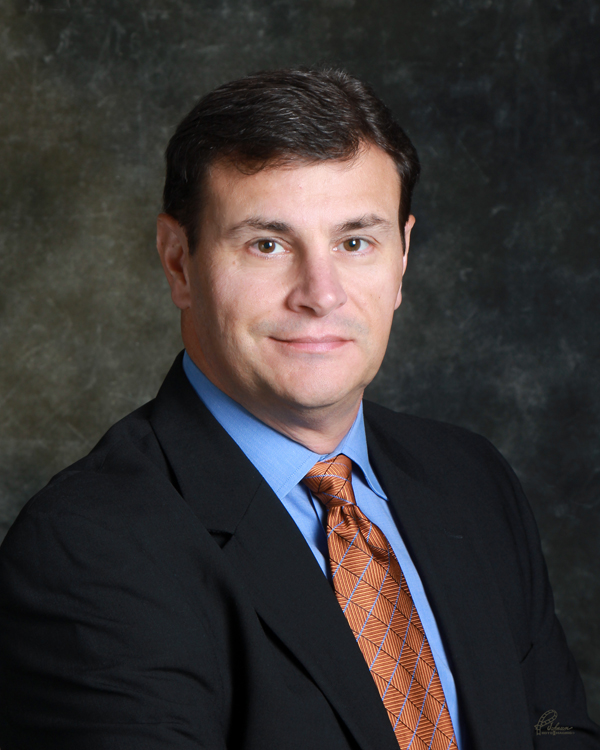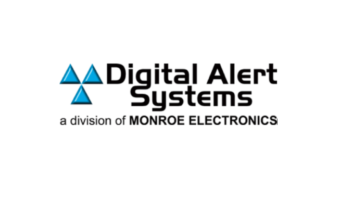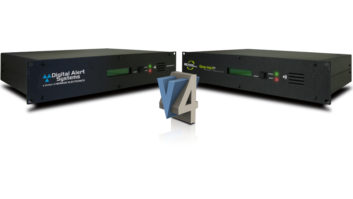Radio World Buyer’s Guide articles are intended to help readers understand why their colleagues chose particular products to solve various technical situations. This month’s articles focus on EAS, remote control systems and signal monitoring.
Digital Alert Systems makes Common Alerting Protocol and Emergency Alert Systems for radio and television broadcasters. It provides R&D, manufacturing, sales and customer service for Digital Alert Systems and Monroe Electronics One-Net brands.
The company recently introduced the third generation of its DASDEC emergency messaging platform with Version 5 software. Bill Robertson is vice president of business development.
Radio World: What do you consider the most important trend or change in the world of EAS right now?

Bill Robertson: With the recent NPRM from the FCC, there are more policy changes afoot. This also ties in with product changes to meet the new requirements. For us, we’ve always focused on continued product improvements. The introduction of our DASDEC-III model is the third complete generational change to our product line and represents the current state of the art.
RW: The FCC has been pushing to improve EAS and WEA public alerting through various initiatives and rule changes. How have those changes affected you as a manufacturer?
Robertson: EAS is approaching 25 years of use, having started in 1998, and in that time, we’ve seen a lot of changes that modify parameters of operations along with adding and subtracting various event codes. However, the basic operation — and limitations — remain the same.
The challenges have been complicated. The CAP monitoring mandate added in 2012 created the biggest set of changes and challenges as it required equipment to be connected to the internet, and with that, the world of cybersecurity became fundamental operations.
Some have been able to manage the proper controls and processes, while others remain blind or irresponsible in managing their networks and equipment. The FCC has tried to stress this with limited success, and we continue to work diligently on security related matters.
However, the real responsibility exists with the end users. The downside for us is twofold: First, loss of confidence in the overall system when end users fail to do even the simplest of tasks, such as placing the equipment behind a firewall. And second, the development time focused on security rather than product improvements.

RW: Beyond changing passwords and staying current with software versions, is there anything broadcasters need to do or know?
Robertson: Broadcasters should absolutely stay current with software versions on all essential systems, and that includes EAS equipment. Software updates may contain security patches, as well as regulatory-driven updates. We continue to invest in security improvements and have folded a range of security updates into our latest software versions.
But, even more broadly, broadcasters should create a plan to secure their IT networks, including protecting data as it travels across the network and to each endpoint. While both we and the government have been reminding broadcasters of the need to use strong firewall protection, it might be appropriate to suggest that broadcasters use next-gen firewalls, which extend the capabilities of traditional firewalls and are capable of advanced network security functions such as intrusion detection and prevention, content filtering to quarantine malware, URL and filtering, and restricting which ports may be accessed across the network.
At some level, cybersecurity is a community task. We are all only as strong as our weakest link. That is true of networks. And that is true of the overall system. If any broadcaster is aware of an operation that is not doing its part, such as exposing key systems to the open internet, it would be a service to the overall broadcast community to remind that operation of the risks of operating in such a manner.
[Sign Up for Radio World’s SmartBrief Newsletter]
RW: Are there recently added features in your line that readers should know about?
Robertson: We launched our third-generation DASDEC-III. This EAS/CAP encoder/decoder incorporates many new features and improvements. Most notable is the adoption of the StudioHub wiring standard using RJ-45 connections for analog program audio. This wiring standard is carried over to the new optional AES switching module and for the fourth monitoring input on some versions.
This makes the DASDEC-III even more customizable for any user, from the smallest low-power operator to the largest full-power stations. When combined with our EAS-Net and MultiStation options, it’s able to interface directly with top automation systems and centralcasting operations.
We’ve also been busy introducing a range of capabilities that should be useful to radio broadcasters, whether single stations or large groups.
For example, we introduced our HALO system to answer the need for a highly specialized management system capable of overseeing all EAS encoder/decoders across an operation, providing an enterprise-wide command of all the EAS devices in a connected organization. We are tackling the virtualization challenge with systems such as our Collector, which can be hosted on a local server or in the cloud and creates a virtual hub receiving and decoding off-air signals from DASDECs in the field, eliminating complex radio streaming configurations. And, speaking of streaming, we have expanded our support for streaming and OTT applications for audio and video.











